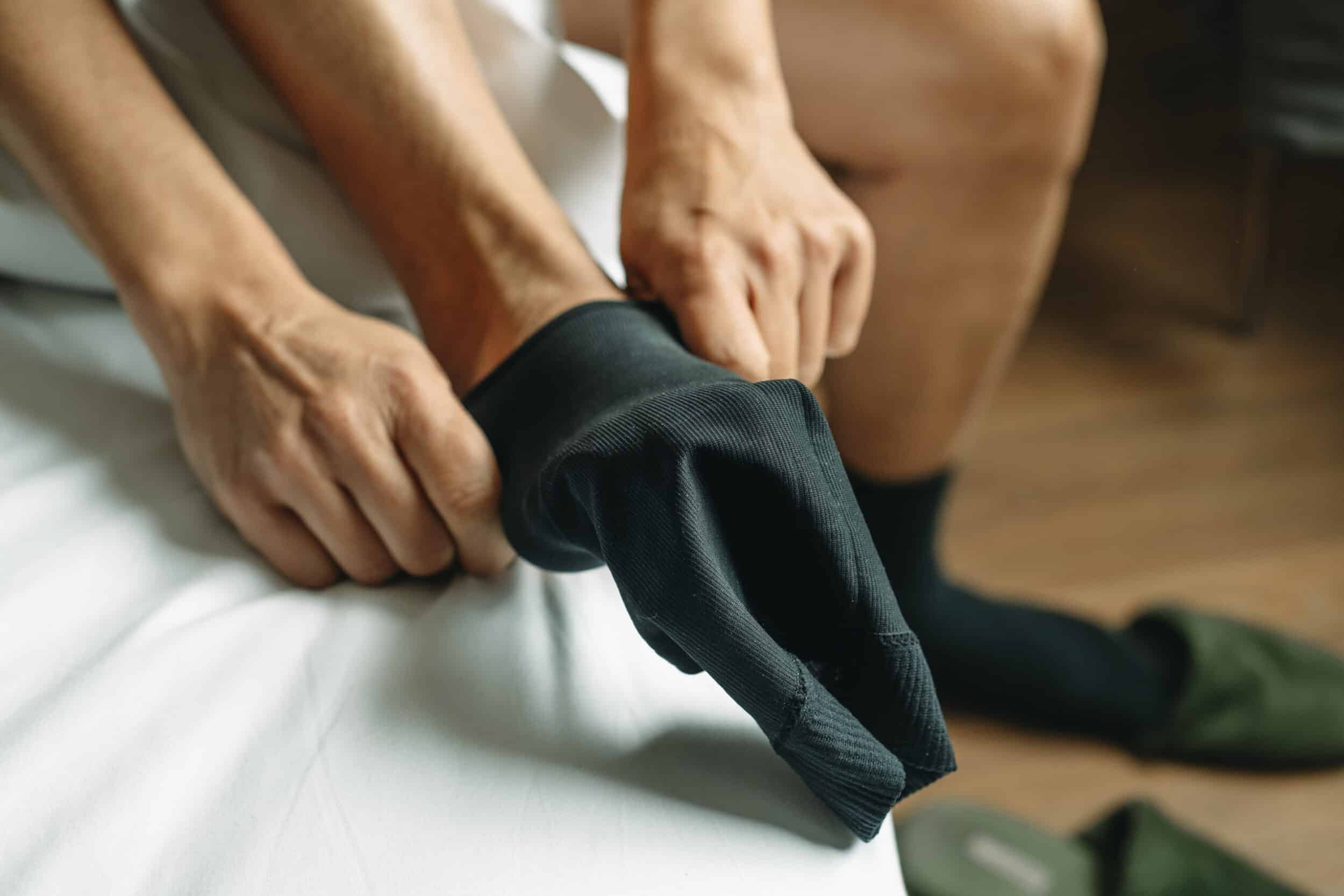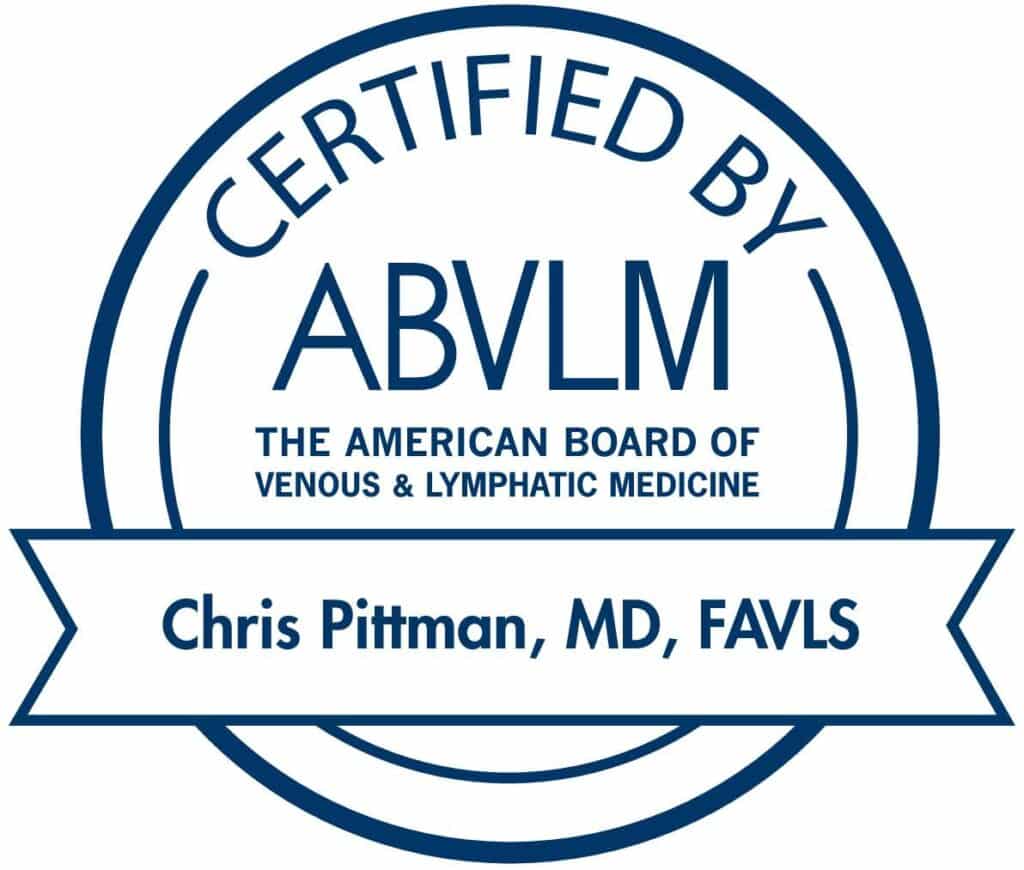How Do Your Graduated Compression Hose Work?
Your legs have many veins or tubes which return blood to your heart. When your venous tubes are compressed by your graduated compression hose your blood moves faster back to your heart which has many medical and even athletic performance benefits. Wearing your graduated compression hose is like putting your thumb over a garden hose! Compression hose makes your blood flow faster in your veins!
Wearing graduated compression is critical! Compression should be greatest at your ankle level and gradually decrease between your ankle and your knee. Graduated compression hose actively moves venous blood and lymphatic fluid out of your leg and towards your heart. Most compression hose sold are simple compression and NOT graduated compression. Make sure your hose are graduated compression hose!
Why Should You Use Graduated Compression Hose?
There is substantial scientific evidence that high quality, measured and fitted, graduated compression hose provide important medical benefits. Graduated compression use is like “wearing a pill” instead of “taking a pill”.
-
- Wearing graduated compression hose improves many superficial venous disease related symptoms including itching, heaviness, fatigue, pain, throbbing, swelling, night cramps, and even restless legs.
- Wearing graduated compression hose improves skin changes of chronic venous disease, improves venous leg ulcer healing, and prevents venous leg ulcer recurrence,
- Wearing graduated compression hose also lowers your risk of serious blood clots or Deep Venous Thrombosis, also known as DVT.
- Wearing graduated compression hose also improves the symptoms of those who currently are suffering from a DVT and helps stop the enlargement and extension of newly formed blood clot.
- Wearing graduated compression hose also benefits those who have suffered a DVT in the remote past.
- If you are a long-distance traveler, wearing graduated compression hose will help you prevent swelling, leg pain and discomfort, and lower your risk of Deep Venous Thrombosis.
- If you are a pregnant woman, you will also benefit from wearing graduated compression hose which will also help you prevent swelling, leg pain and discomfort, and lower your risk of Deep Venous Thrombosis.
- Many studies demonstrate improved human performance during muscular exertion when wearing compression hose. Athletic performance benefits of using hose during exercise include:
- Returning deoxygenated blood to your lungs faster.
- Improving tissue oxygenation.
- Reduction in muscle pain and fatigue by accelerating the clearance of metabolites that build up in your muscles during exertion, such as lactic acid.
- Reduction in muscle oscillation upon ground contact during running.
- Faster recovery times by reducing effects of delayed onset muscle soreness in the days following strenuous exercise.
- For you to obtain the benefit of less delayed muscle soreness after exercise, be sure to wear your graduated compression hose for at least 2 hours AFTER athletic exertion to get maximal benefit from your hose.
- It is only a slight exaggeration to say that wearing high quality, properly fitted, graduated compression hose is like wearing a “performance enhancing drug”!
How Should You Choose The Right Graduated Compression Hose?
First and very important, for you to benefit from a good quality pair of graduated compression hose your legs must be measured for the proper fit! You must wear compression hose that are specifically measured to fit your leg size and configuration or you will be uncomfortable and not get the proper benefit from compression hose.
- Good quality hose require you to measure your legs! A good quality hose brand will have multiple sizes based on careful measurements of your legs.
- Unfortunately, many patients buy poor quality and poorly fitting hose and patients suffer as a result, become frustrated with uncomfortable hose, and stop wearing hose altogether! Which brands of graduated compression hose are the best?!
- First, I would not rely on the internet to get a good answer.
- Second, it is suggested that you ask your vein care physician which hose are best.
- If you are looking for graduated compression hose for only athletic performance, I suggest you find a hose company that also manufactures graduated compression hose used for medical vein disease.
- The amount of compression you use should be tailored to your specific needs. There are 3 classes of compression hose based on ankle-level pressure within your hose.
- Class I, 15-20 mmHg, for spider veins, varicose veins, and mild ankle swelling.
- Class II, 20-30 mmHg, for large varicose veins, moderate ankle swelling, and after spider vein or varicose vein minimally invasive procedures or surgery.
- Class III, 30-40 mmHg, for severely symptomatic patients, severe ankle swelling, ankle ulcers, and lymphedema.
How Should You Use Your Graduated Compression Hose?
You cannot over wear your compression hose! However, if at any time your hose are very uncomfortable or you develop pain, numbness or tingling in your feet or legs, you should immediately remove your hose. You can even wear hose overnight which helps many people with night cramps and restless legs. Many patients and their doctors don’t realize that both night cramps and restless legs are often related to undiagnosed, hidden vein disease.
How Do I Wear Compression Socks?
Most people need to wear compression socks all day, or at least when on their feet. Correct fit means they are snug but comfortable. You’ll need a prescription for them and should buy them from a store that offers fitting services. Expect them to last about four to six months. You should put them on first thing in the morning, which is when you have the least swelling in your legs (keep them right by the bed to make it easier). They can be washed as necessary – they will last longer if air-dried.
Tips for putting on your compression hose:
- Use rubber gloves when donning hose to avoid runs and holes.
- For open toe compression hose:
- Make sure your hose does not ride up to your midfoot!
- Only your toes should stick out of your open toe hose.
- For knee high compression hose:
- Do not pull above the knee; the top of the hose should be below the knee.
- If you have difficulty donning your hose, contact us at 855-834-6911.
Your hose are machine washable: Delicate, Gentle, or Lowest Permanent Press Setting
Your hose are machine dryable: Tumble Dry Low Heat, Delicate, or Lowest Permanent Press Setting
What If I Have Trouble Getting Them On?
When you first get your compression socks, wash them before wearing, as it helps make them more flexible. Sit in a chair for support and to prevent you from falling. Roll or gather the sock down to the toe and fit it over the toes, then gradually slide the socks over your legs. Don’t grab or pull the top of the sock, as it may increase the risk of a tear in the material. You may find it helpful to wear rubber gloves to help you grip the sock material. You might also want to powder your legs or use cornstarch before putting on the sock.
Compression socks can make a big difference if you have varicose veins that cause symptoms such as burning, itching or pain. They also help you heal after venous medical procedures like sclerotherapy. If you have questions or concerns about compression socks, please call Vein911® Vein Treatment Centers for more information.












